With the saying “A good start makes a good end,” people in many Eastern countries enjoy dishes that symbolize good luck and wealth on the first full moon of the lunar year.
The first full moon of the lunar year is an important holiday in East Asian culture. While in Vietnam, this day marks the first full moon of the new year, countries like China, the Philippines, and South Korea celebrate the Lantern Festival (元宵节 – Yuanxiao Festival) with great pomp. During these festive days, in addition to traditional activities, people prepare special dishes to wish for peace and good fortune in the new year.
What do Vietnamese people eat on the first full moon?
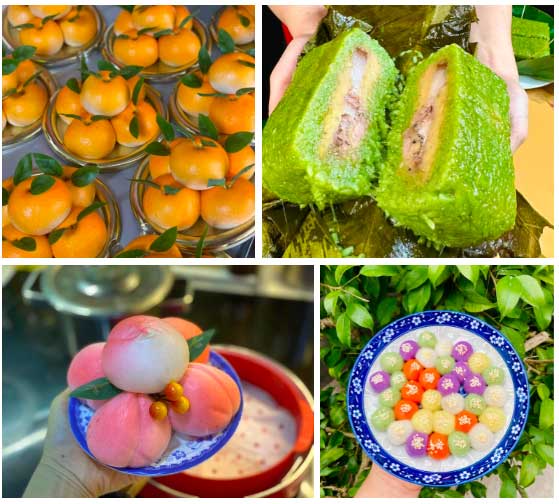
Image: Bánh chưng Nương Bắc
On the first full moon of the lunar year, Vietnamese people typically offer a savory meal to their ancestors and a vegetarian meal to Buddha. Alongside the traditional sticky rice with gac and bánh chưng, vegetarian dishes such as peach-shaped buns and lotus-shaped pastries are widely favored.
Additionally, it is common for Vietnamese people to prepare bánh trôi nước, which is usually filled with sugarcane, mung beans, or red beans, symbolizing a smooth and peaceful new year. Bánh trôi nước is often served with ginger syrup, which is beneficial for the body during the transitional spring period.
What do Chinese people eat during the Lantern Festival?
For people in Taiwan and China, the Lantern Festival is a significant reunion holiday, celebrated with as much importance as the Lunar New Year. Thus, on the first full moon of the new year, people eagerly participate in cultural activities such as releasing lanterns, admiring lantern displays, solving riddles on lanterns, and couples enjoying the scenic views together.
In addition, they do not forget to prepare lucky foods to wish for a prosperous and peaceful year ahead.
Eating Tangyuan
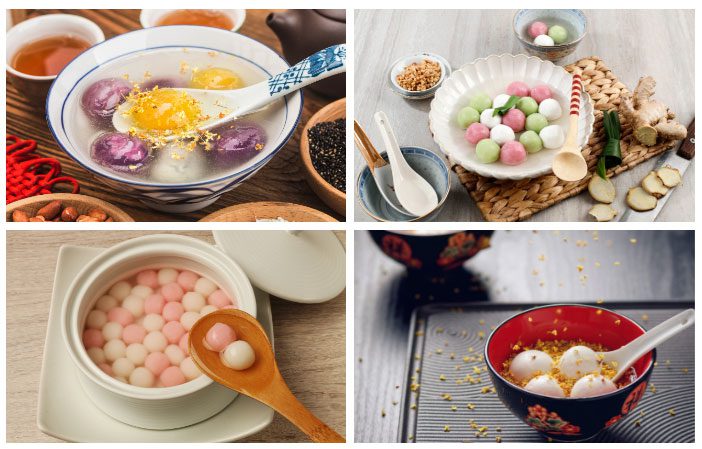
Tangyuan, also known as glutinous rice balls, symbolizes reunion and implies happiness in the new year together, with everything going as one wishes.
Dumplings and Buns
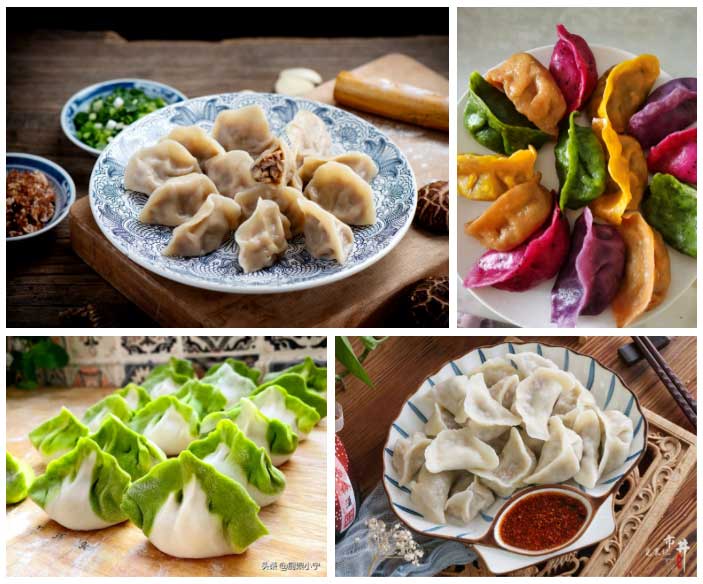
The tradition of eating dumplings or buns during the Lantern Festival has been around for a long time. It is believed that eating buns at the beginning of the new year or during the Lantern Festival symbolizes good luck and success.
Red Bean Cake
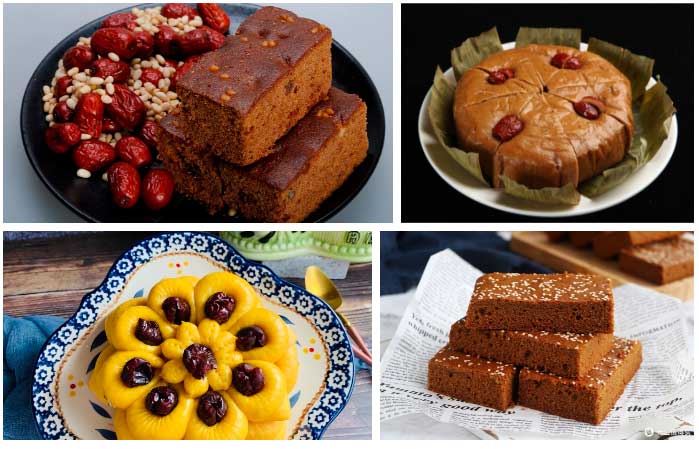
The red bean cake is a traditional dessert for the Lantern Festival. Not only on this day but also during the new year or other festivities, Chinese people enjoy red bean cake, which symbolizes good fortune and auspiciousness.
What do South Koreans eat on the first full moon?
The first full moon in South Korea is celebrated as Daeboreum. People engage in traditional games on the night before the full moon. This festival is also known as the Jeongwol Fire Festival, where they burn dry grass, straw, or branches arranged in a triangular shape to create a home for the rising moon. In rural areas, people climb mountains to catch a glimpse of the rising moon, symbolizing good luck.
Everyone eats heartily during the early dinner on the 14th and the morning of the 15th, representing diligence throughout the year.
Ogokbap (Five-Grain Rice)
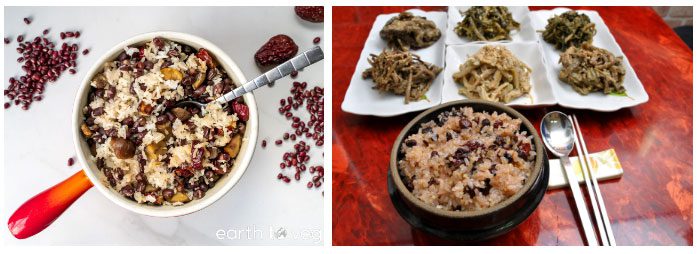
In the morning, South Koreans typically eat rice cooked with five kinds of grains. Ogokbap is a mixed grain rice made from various types of grains and beans such as millet, barnyard millet, black beans, red beans, and chickpeas. When cooking Ogokbap, Koreans often add a little salt to enhance the flavor and richness of the rice.
In the past, due to difficult living conditions and a lack of food, people believed that these grains could prevent skin diseases and that their nutritional value was significantly higher than that of regular rice.
Thus, eating these grains on the first full moon is believed to keep children healthy throughout the year. On the night of the 14th or during the full moon, South Koreans often admire the moon and wish for good things for the entire year, believing that their wishes on this day will come true.
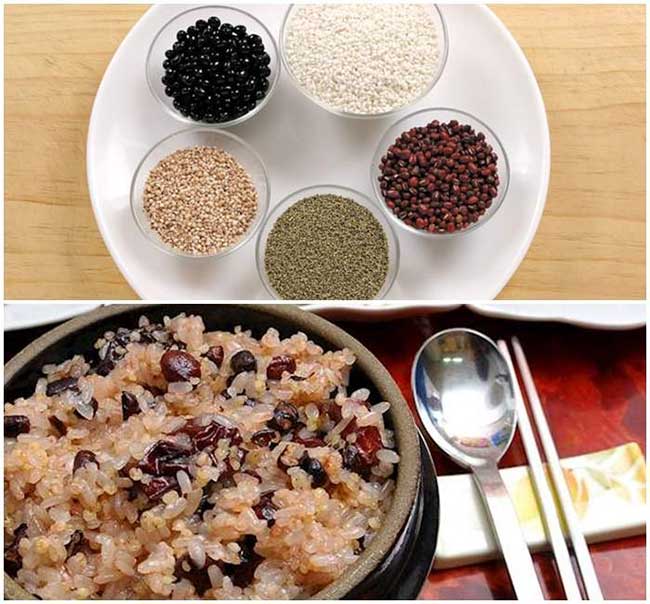
Ogokbap.
For farmers, the first full moon also holds special significance as a day to pray for a bountiful harvest throughout the year. In Korean, the first full moon is called “Daeboreum” (대보름), meaning the biggest full moon of the year. As the first full moon of the new year, the 15th day of the first lunar month is considered the start of the farming season, making it a significant holiday.
Therefore, on this day, various rituals are held to pray for a prosperous year. South Koreans also engage in traditional games such as “Chasing away the heat” (selling away the heat to others before the full moon rises), moon-gazing, “stepping on the bridge” (to promote health), flying kites, and sticky rice is a staple dish during the first full moon celebration in South Korea.
Yaksik
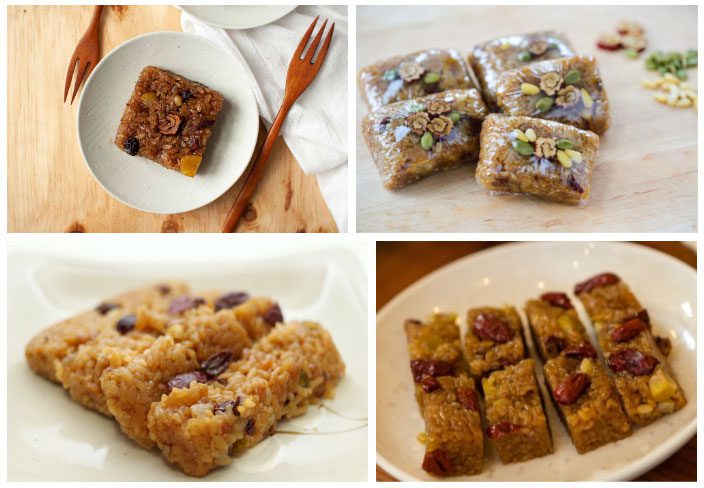
Yaksik is made from glutinous rice, chestnuts, honey, pine nuts, soy sauce, and sesame oil. This dish is served in a bowl or cut into small pieces.
Additionally, Koreans also eat various vegetables seasoned in a specific manner known as boreum namul. Eating bokssam – rice wrapped in vegetable leaves is believed to bring good fortune.
What do Japanese people eat on the first full moon?

In Japan, the first full moon is celebrated as Koshōgatsu. People commonly eat red bean porridge, hoping for a lucky and peaceful new year.


















































